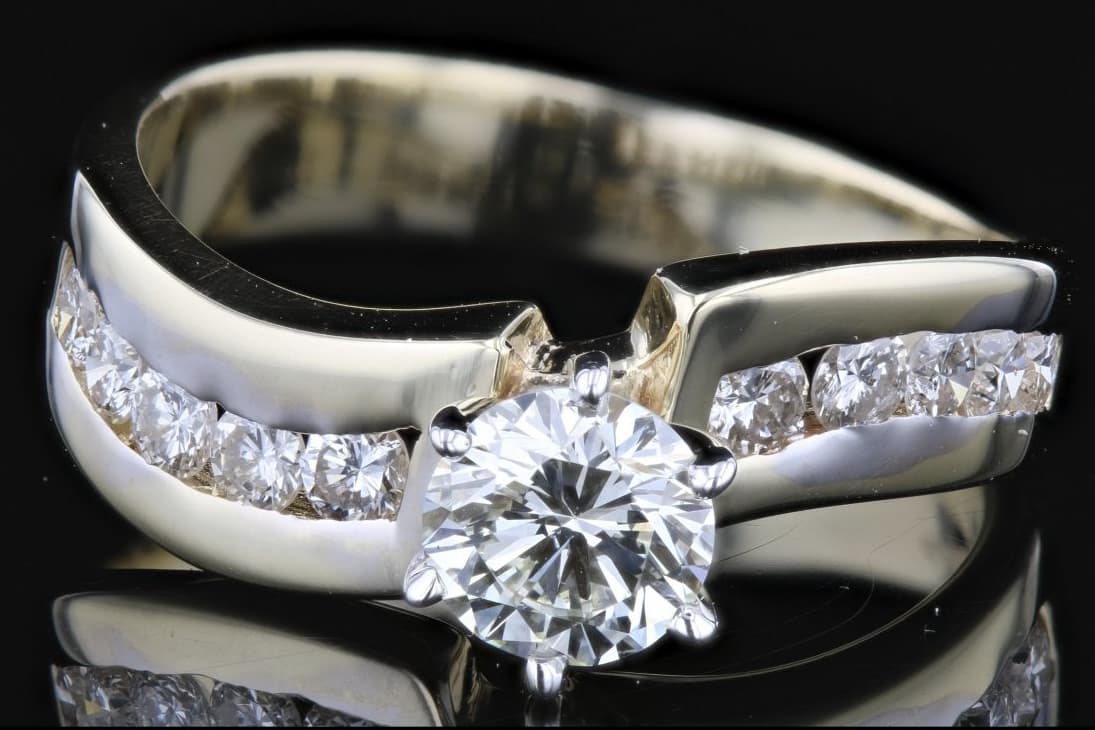High-Performance Diamonds: Worth the Money or Just Hype?
High-performance diamonds are marketed as perfectly symmetrical stones of exceptional quality. Learn if they’re worth the extra money you’ll spend on them.
5 Minute Read
What are High-Performance Diamonds?
The term high-performance diamonds refers to diamonds that exceed Gemological Institute of America (GIA) and American Gem Society (AGS) criteria for Excellent or Ideal cut diamonds.
Crafted by Infinity, out of Antwerp, Belgium, is the largest creator and distributor of high-performance diamonds. They start by handpicking rough stones with very good clarity and color. Then, they use precision shaping techniques to make the diamonds look more eye-clean and colorless than diamonds cut from comparable rough.
How are Standard Diamonds Cut?
Normally, a diamond cutter cuts a stone not only to remove flaws but also to bring out as much brightness, sparkle, and fire as possible from a particular stone. As a result, no two cut diamonds will be exactly alike. One diamond may just look better as an emerald cut, while another would work best as a round brilliant. Some diamonds with the same cut may look different, even if they have the same shape. Ovals and pears, for instance, may not have exactly the same faceting. Take a look at the two ovals below. Notice how the diamonds aren't cut exactly the same.
Even standard round brilliants can have variations in faceting. One diamond's pavilion may be cut too deep or too shallow, or the table in another diamond may be bigger than another. For example, although both of the diamonds below have GIA-graded Excellent cuts, notice the difference in their table sizes.
How are High-Performance Diamonds Cut?
In contrast, all high-performance round diamonds receive a brilliant cut, which has 57 facets. Diamond cutters use precision tools to make every single high-performance diamond symmetrical and exactly the same, using a Hearts and Arrows pattern.
Hearts and Arrows is a precision cut that's almost perfectly symmetrical. When you look at the diamond under a special tool, a proportion scope, you'll see arrows from the top and hearts from the bottom. In fact, you can even see the arrows in normal light when you look directly down at it.
at CustomMade
Below, you can see the heart pattern and arrow pattern under this 1.20-ct True Hearts™ high-performance diamond, visible through a proportion scope.
Do High-Performance Diamonds Have Better Color?
The answer to this question is a bit complicated. Before they're cut, high-performance diamonds are chosen for their exceptional color. Even so, the stones may still have a slight yellowish tint, caused by the presence of nitrogen. This is true of all colorless or white diamonds. The more nitrogen present when the diamond formed, the more yellow it will look. White diamonds are graded on a letter scale ranging from D to Z, D though F considered "colorless," N through Z considered "very light yellow." For white diamonds, the more colorless, the higher the color grade. (Fancy colored diamonds, like pinks and blues, have a different color grading system).
According to Crafted by Infinity, the precision cut of a high-performance diamond reflects more light back to the viewer, making the diamond appear whiter. As a result, a high-performance diamond can appear two letter grades whiter than its GIA or AGS counterparts. For example, a high-performance diamond graded G, just below the colorless range, will look as colorless as a non-high performance diamond graded E. Generally, higher color grades mean higher diamond prices.
What About Clarity in a High-Performance Diamond?
Diamonds naturally have flaws, things that affect the free passage of light through them. Even diamonds with a clarity grade of "Flawless" (F) have inclusions when viewed at magnifications greater than 10x. (10x is the standard magnification for clarity grading diamonds).
The lower a diamond's clarity grade, the larger or more numerous its flaws. However, you can still find stones that are eye-clean even with lower clarity grades. An eye-clean diamond has no inclusions visible to the naked eye. Even diamonds with mid-range clarity grades of "Very Small" inclusions (VS2) can appear eye-clean. Of course, it's easier to find eye-clean stones with higher grades. You can also find eye-clean stones with grades lower than VS2, though it will require some dedicated searching.
On the other hand, you can easily find eye-clean, high-performance diamonds all the way down to "Slightly Included" (SI1), a low-range grade. Typically, a diamond with a lower clarity grade will cost less, whether or not you can see the flaws.
High-performance diamonds are also guaranteed not to be hazy or too fluorescent, which can make diamonds appear cloudy.
What's the Price Difference?
Overall, a high-performance diamond will cost you significantly more than an GIA or AGS-graded Excellent or Ideal cut diamond of the same carat weight. For instance, a one-carat, E color, SI1 clarity Infinity diamond costs between $8,447 and $8,892. The same type of diamond with an Excellent cut grade at James Allen can cost as low as $4,280.
Is a High-Performance Diamond Worth It?
Bottom line, you can get a well-cut, eye-clean diamond with excellent color without the high-performance price tag. You may even decide you like a little bit of yellow in your diamond, or prefer a fancy shape. Both these choices can save you even more money.
But if you're looking for that extra touch — a handpicked, perfectly symmetrical diamond — then it's probably worth spending the extra money on a high-performance diamond.
Laurie Mega
Related Articles
Diamond Value, Price, and Jewelry Information
Recommended Diamond Grading Tools for Novices
2018 Update to the FTC Diamond Jewelry Guides
Exposing Diamond Overgrading at EGL Labs
Never Stop Learning
When you join the IGS community, you get trusted diamond & gemstone information when you need it.
Get Gemology Insights
Get started with the International Gem Society’s free guide to gemstone identification. Join our weekly newsletter & get a free copy of the Gem ID Checklist!
